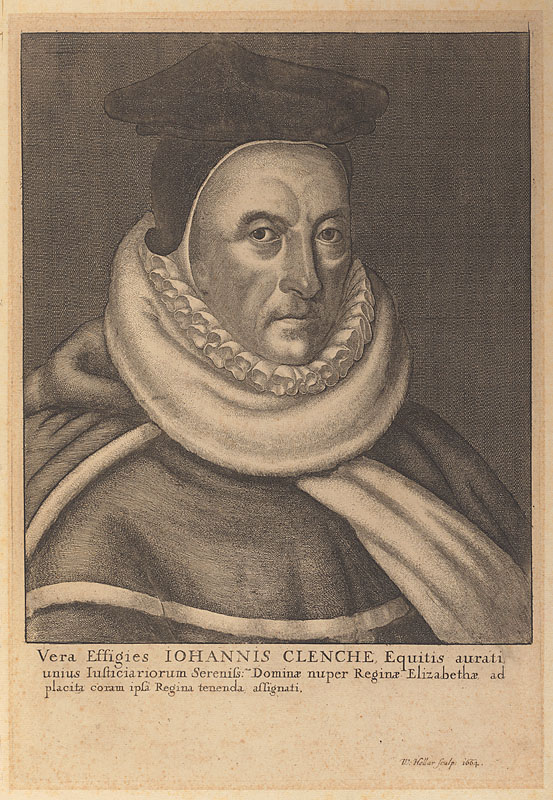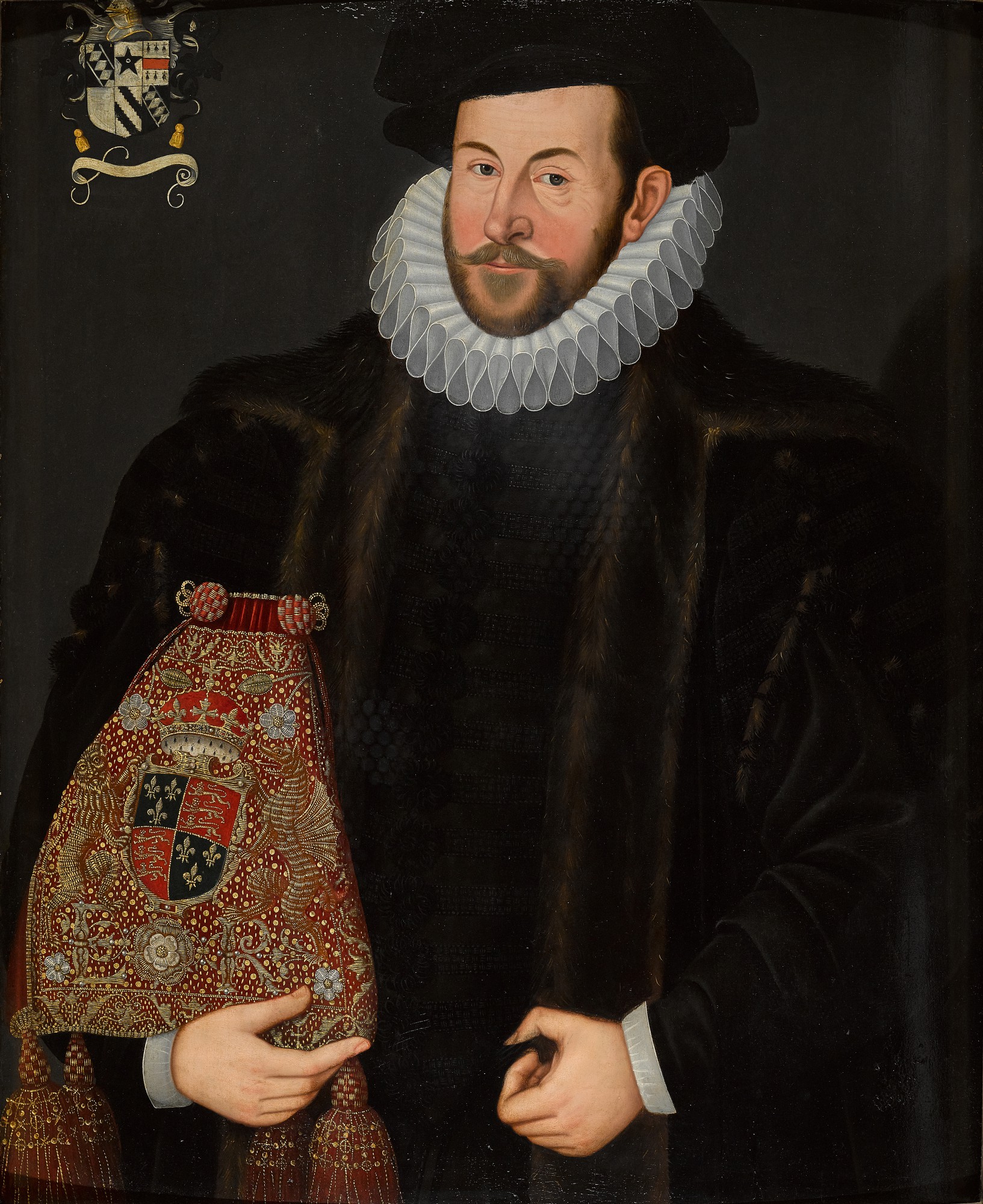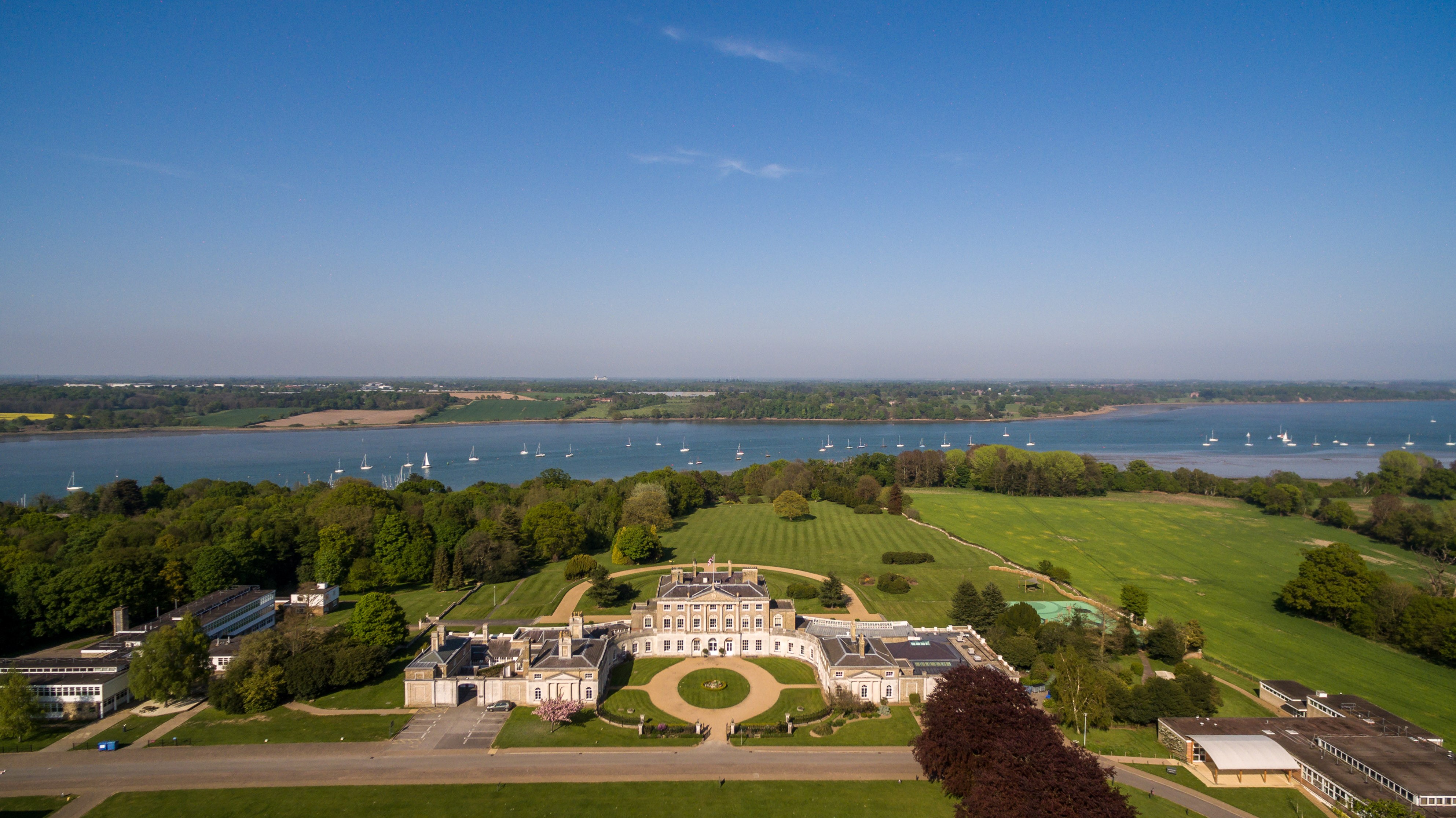|
John Clench
John Clench (c. 1535 - 1607) was an English judge, a Serjeant-at-Law, Baron of the Exchequer and Justice of the Queen's Bench, of the late Tudor period. He established his family in south-east Suffolk, in the neighbourhood of Ipswich, where for many years he was the Town Recorder. Life The path to distinction Clench was the son of John Clench of Wethersfield, Essex and Joan, daughter of John Amias of the same county, and grandson of John Clench of Leeds, Yorkshire.'Visitation of Suffolk, 1612: Clenche, of Thiseldon Hall in Burgh', in W.C. Metcalfe (ed.), ''The Visitations of Suffolk of 1561, 1577 and 1612'' (Private, Exeter 1882)pp. 124-25(Internet Archive).'Clench pedigree from the Revett MSS', in J.J. Muskett, ''Suffolk Manorial Families, Being the County Visitations and Other Pedigrees'' (Private, Exeter 1908), IIp. 101(Google). He was admitted a student at Lincoln's Inn on 11 February 1555/56, and was chamber-fellow with Thomas Weekes, 'a learned gospeller', in 1558-59. Walt ... [...More Info...] [...Related Items...] OR: [Wikipedia] [Google] [Baidu] |
John Clench
John Clench (c. 1535 - 1607) was an English judge, a Serjeant-at-Law, Baron of the Exchequer and Justice of the Queen's Bench, of the late Tudor period. He established his family in south-east Suffolk, in the neighbourhood of Ipswich, where for many years he was the Town Recorder. Life The path to distinction Clench was the son of John Clench of Wethersfield, Essex and Joan, daughter of John Amias of the same county, and grandson of John Clench of Leeds, Yorkshire.'Visitation of Suffolk, 1612: Clenche, of Thiseldon Hall in Burgh', in W.C. Metcalfe (ed.), ''The Visitations of Suffolk of 1561, 1577 and 1612'' (Private, Exeter 1882)pp. 124-25(Internet Archive).'Clench pedigree from the Revett MSS', in J.J. Muskett, ''Suffolk Manorial Families, Being the County Visitations and Other Pedigrees'' (Private, Exeter 1908), IIp. 101(Google). He was admitted a student at Lincoln's Inn on 11 February 1555/56, and was chamber-fellow with Thomas Weekes, 'a learned gospeller', in 1558-59. Walt ... [...More Info...] [...Related Items...] OR: [Wikipedia] [Google] [Baidu] |
Woodbridge, Suffolk
Woodbridge is a port and market town in the East Suffolk District, East Suffolk district of Suffolk, England. It is up the River Deben from the sea. It lies north-east of Ipswich and forms part of the wider Ipswich built-up area. The town is close to some major archaeological sites of the Anglo-Saxons, Anglo-Saxon period, including the Sutton Hoo burial ship, and had 35 households at the time of the ''Domesday Book'' of 1086. It is well known for its boating harbour and tide mill, on the edge of the Suffolk Coast and Heath Area of Outstanding Natural Beauty. Several festivals are held. As a "gem in Suffolk's crown", it has been named the best place to live in the East of England. Etymology Historians disagree over the etymology of Woodbridge. ''The Dictionary of British Placenames'' suggests that it is a combination of the Old English wudu (wood) and brycg (bridge). However in the Sutton Hoo Societies' magazine ''Saxon'' points out that is no suitable site for a bridge at Woodb ... [...More Info...] [...Related Items...] OR: [Wikipedia] [Google] [Baidu] |
Francis Rodes
Sir Francis Rodes (c. 1530–1588) of Barlborough Hall in the parish of Barlborough, Derbyshire, was an English judge who took part in the trial of Mary, Queen of Scots. He built Barlborough Hall and was one of the founders of Netherthorpe School. Origins He was the son of John Rodes of Staveley Woodthorpe in Derbyshire, Sheriff of Derbyshire in 1591, by his first wife Attelina Hewett of the West Riding of Yorkshire. The Rodes family of Derbyshire was founded five generations before Francis by William Rodes, who married Emme Cachehors, daughter and heiress of John Cachehors/Cachehaus of Staveley Woodthorpe. The Rodes family traced its ultimate descent from Gerard de Rodes, a prominent baron in the reign of King Henry II (1154-1189). Career Francis was educated at St. John's College, Cambridge, but did not graduate. In 1549 he was entered at Gray's Inn, [...More Info...] [...Related Items...] OR: [Wikipedia] [Google] [Baidu] |
John Puckering
Sir John Puckering (1544 – 30 April 1596) was a lawyer and politician who served as Speaker of the House of Commons (United Kingdom), Speaker of the House of Commons and Lord Keeper of the Great Seal from 1592 until his death. Origins He was born in 1544 in Flamborough, East Riding of Yorkshire, the eldest son of William Puckering of Flamborough, by his wife Anne Ashton, daughter and heiress of John Ashton of Great Lever, Lancashire. Career He entered Lincoln's Inn on 10 April 1559 and was called to the bar on 15 January 1567. After some years' practice, he became a governor in 1575, and in 1577 became an elected reader in Lent.Foss, p531 He became a sergeant at law in 1580. Work in Parliament Puckering became a Member of Parliament in 1581. On 23 November 1585, Parliament met and elected Puckering, who was returned for Bedford (UK Parliament constituency), Bedford, as Speaker of the House of Commons. During this Parliament, a bill against Jesuits was brought up for disc ... [...More Info...] [...Related Items...] OR: [Wikipedia] [Google] [Baidu] |
Christopher Hatton
Sir Christopher Hatton KG (1540 – 20 November 1591) was an English politician, Lord Chancellor of England and a favourite of Elizabeth I of England. He was one of the judges who found Mary, Queen of Scots guilty of treason. Early years Sir Christopher was the second son of William Hatton (died 28 August 1546) of Holdenby, Northamptonshire, and his second wife, Alice Saunders, daughter of Lawrence Saunders (died 1544) of Harrington, Northamptonshire. His wife, Alice Brokesby was the daughter of Robert Brokesby (died 28 March 1531) of Shoby, Leicestershire, and of Alice Shirley. On his father's side, the Hatton pedigree is said to be "traced beyond records". In the reign of Henry VII, Henry Hatton of Quisty Birches in Cheshire married Elizabeth, sole heiress of William Holdenby of Holdenby, Northamptonshire. Their son, John Hatton, settled at Holdenby and had three sons, of whom Christopher Hatton's father, William, was the eldest. He is said to have had two brothers, Thomas ... [...More Info...] [...Related Items...] OR: [Wikipedia] [Google] [Baidu] |
William Peryam
Sir William Peryam (15349 October 1604) of Little Fulford, near Crediton in Devon, was an English judge who rose to the position of Lord Chief Baron of the Exchequer in 1593, and was knighted by Queen Elizabeth I. Origins Peryam was born in Exeter, the eldest son of John Peryam, twice mayor of Exeter, and his wife Elizabeth, a daughter and co-heir of Robert Hone of Ottery. The year of Peryam's birth is known to history but, as was common in the 16th century, the day and month went unrecorded. Through his mother's sister, Joan Bodley née Hone, Peryam was cousin to Sir Thomas Bodley. Like the Bodleys, the Peryams were early adherents of Protestantism and were also threatened in the time of Marian persecutions. Under Queen Elizabeth however, the family thrived, with William eventually achieving eminence in law and his younger brother John Peryam (1541 – c. 1618), MP, elected to Parliament four times (Barnstaple 1584, Bossiney 1586, Exeter 1589 and 1593) and becoming Mayor of ... [...More Info...] [...Related Items...] OR: [Wikipedia] [Google] [Baidu] |
Francis Wyndham (judge)
Francis Wyndham (died 1592), of Norwich, Beeston and Pentney, Norfolk, was an English judge who once sat in parliament. He was a Member of Parliament (MP) for Norfolk Norfolk () is a ceremonial and non-metropolitan county in East Anglia in England. It borders Lincolnshire to the north-west, Cambridgeshire to the west and south-west, and Suffolk to the south. Its northern and eastern boundaries are the No ... in 1572.N.M. Fuidge, 'Wyndham, Francis (d.1592), of Norwich, Beeston and Pentney, Norf.', in P.W. Hasler (ed.), ''The History of Parliament: the House of Commons 1558-1603'' (from Boydell and Brewer 1981)History of Parliament Online References Year of birth missing 1592 deaths People from Breckland District Judges from Norwich English MPs 1572–1583 People from King's Lynn and West Norfolk (district) Serjeants-at-law (England) Members of the Parliament of England for Norfolk Politicians from Norwich {{16thC-England-MP-stub ... [...More Info...] [...Related Items...] OR: [Wikipedia] [Google] [Baidu] |
Francis Gawdy
Sir Francis Gawdy (died 15 December 1605) was an English judge. He was a Justice of the King's Bench, and Chief Justice of the Common Pleas. His country seat and estates were in Norfolk. Career Family and name Francis Gawdy was the third son of Thomas Gawdy, and was baptised Thomas Gawdy, as were his two elder half-brothers,D. Ibbetson, 'Gawdy, Sir Francis (d. 1605)', ''Oxford Dictionary of National Biography'' (Oxford University Press 2004)subscription required for online access Thomas Gawdy (d.1556) and Thomas Gawdy (d.1588). Francis then had his name changed at his Confirmation, establishing legal precedent that a name given at baptism could be changed at confirmation. Legal education and progress He may have studied at Trinity Hall, Cambridge, matriculating in 1545, but this record might rather be attributable to Francis's half-brother, the Thomas Gawdy who died in 1588. He was called to the bar at Inner Temple in 1549, becoming a bencher in 1558 and treasurer in 1571. He ... [...More Info...] [...Related Items...] OR: [Wikipedia] [Google] [Baidu] |
Woolverstone Hall
Woolverstone Hall is a large country house, now in use as a school and available at times as a function venue, located south of the centre of Ipswich, Suffolk, England. It is set in on the banks of the River Orwell. Built in 1776 for William Berners (property developer), William Berners by the architect John Johnson (architect, born 1732), John Johnson of Leicestershire, it is an outstanding example of English Palladian architecture and is a Grade I listed building while associated buildings are Grade II. From 1951 to 1990, it housed Woolverstone Hall School, a boarding school operated by London County Council (LCC). History It has been speculated that a Viking chieftain named Wulf sacrificed a native villager on a glacial monolithic stone, giving rise to the name ''Wulf's stone''.Smitherman, J. S. HWoolverstone, the Estate and Hall—a condensed historyin ''Janus'', 21st anniversary edition, 1972. Domesday Book recorded two manors in the area which were merged in the 13th centu ... [...More Info...] [...Related Items...] OR: [Wikipedia] [Google] [Baidu] |
Robert Southwell (died 1598)
Sir Robert Southwell (1563–1598), of Woodrising, Norfolk, was an English politician. Robert was the son of Sir Thomas Southwell and his second wife Mary, daughter of Sir Rice Mansel. Thomas's third wife was Nazaret or Nazareth Newton. He was High Sheriff of Norfolk for 1589–90 and Vice-Admiral of Norfolk from 1585 to 1598. He was a Member (MP) of the Parliament of England for Guildford in 1597. Robert was an admiral in 1588 in the battle with the Spanish Armada, in command of the '' Elizabeth Jonas''. His portrait was included in the Armada Tapestries. In 1591 the Privy Council asked him, as Vice-Admiral, to adjudicate in the case of a Scottish ship belonging to an Edinburgh merchant Archibald Johnston wrecked on the coast of Norfolk. He died on 12 October 1598 at Woodrising, and was buried on 16 November at Woodrising church. The chief mourner was his cousin Robert Mansell. Family On 27 April 1583 he married Elizabeth Howard, eldest daughter of Charles Howard, 1st ... [...More Info...] [...Related Items...] OR: [Wikipedia] [Google] [Baidu] |
Henry Tooley
Henry Tooley (d. 1551) was a Suffolk, England merchant. Alive during the Tudor period, by the time of his death he was one of the richest businessmen in the town of Ipswich. He was closely associated with the fellow merchant and Member of Parliament for Ipswich, Robert Daundy. His trade network extended Biscayan ports, the Netherlands and Iceland as well as including much of East Anglia east of line drawn between Chelmsford and Thetford – and the highly populated and industry towns of south Suffolk in particular. Early life Two locations have been put forward for the origin of his family: Corton, Suffolk or Catton, Norfolk. He was born in the last quarter of the 15th century. Traditional accounts claim he was born in the house which became the Ram Inn. He probably completed an apprenticeship, but there is no mention of him in the records until 1499 when 'Henry Toly' is mentioned occupying some land near the river in Ipswich. His biographer, John Webb, suggests that he worked a ... [...More Info...] [...Related Items...] OR: [Wikipedia] [Google] [Baidu] |
Edmund Daundy
Edmund Daundy (by 1468 – 6 May 1515), of Ipswich, Suffolk, was an English politician and Ipswich merchant. He was a Member of Parliament (MP) for Ipswich in 1512 and 1515 and believed to be Thomas Wolsey's uncle, being a brother to his mother Joan.. In 1509 he founded a chantry chapel located in St Lawrence Church, Ipswich. what has become Chantry Park Chantry Park is a park located west of Ipswich town centre, in the Ipswich district, in the county of Suffolk, England. It is the largest park in Ipswich and extends over 124 acres. Chantry Park was opened to the public on 17 May 1928 and w ..., Ipswich. His son, Robert Daundy, was also subsequently MP for Ipswich. He left extensive bequests for the town in his Will dated 2 May 1515. References 15th-century births 1515 deaths Members of the Parliament of England (pre-1707) for Ipswich English MPs 1512–1514 English MPs 1515 {{16thC-England-MP-stub ... [...More Info...] [...Related Items...] OR: [Wikipedia] [Google] [Baidu] |



_cropped.jpg)
.jpg)
